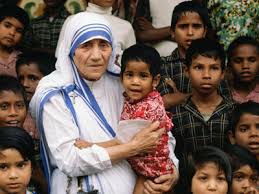What does exclusion mean?
 An exclusion means that a pupil is not allowed to attend school or go on to school premises for a period of time or permanently. Headteachers may use exclusion as a way of managing the behaviour of pupils. It is also used as a way of giving clear messages to the pupil involved and the whole school community, that certain kinds of behaviour are unacceptable.
An exclusion means that a pupil is not allowed to attend school or go on to school premises for a period of time or permanently. Headteachers may use exclusion as a way of managing the behaviour of pupils. It is also used as a way of giving clear messages to the pupil involved and the whole school community, that certain kinds of behaviour are unacceptable.





As children grow older, the opportunity cost of education is even larger, hence increasing the
pressure for children to work and earn income for the household as opposed to spending time
in education. Third, distance to schools, poor quality of education, inadequate facilities,
overcrowded classrooms, inappropriate language of instruction, teacher absenteeism and, in
the case of girls school safety.
Poverty also interacts with other points of social disadvantage, with the interaction of factors
putting further pressure on vulnerable and marginalised children to drop out (Hunt, 2008:52).
For example, orphans, migrants, lower caste/scheduled tribe children and children from
minority language groups in many, but not all, contexts have disrupted access, and are more
prone to drop out or exclusion

The Government, Non Government Organization (NGO’s) and others have all come together for the cause, primarily focusing on the unique problems concerning the children in India. They include issues related to children and work, tackling the problem of child labour, elimination of discrimination towards Girl Child, uplifting street children, indentifying the special needs of children with disabilities, and providing education to every child as its Fundamental Right
How can we overcome exclusion in education?
As children grow older, the opportunity cost of education is even larger, hence increasing the
pressure for children to work and earn income for the household as opposed to spending time
in education. Third, distance to schools, poor quality of education, inadequate facilities,
overcrowded classrooms, inappropriate language of instruction, teacher absenteeism and, in
the case of girls school safety.
Poverty also interacts with other points of social disadvantage, with the interaction of factors
putting further pressure on vulnerable and marginalised children to drop out (Hunt, 2008:52).
For example, orphans, migrants, lower caste/scheduled tribe children and children from
minority language groups in many, but not all, contexts have disrupted access, and are more
prone to drop out or exclusion
The Government, Non Government Organization (NGO’s) and others have all come together for the cause, primarily focusing on the unique problems concerning the children in India. They include issues related to children and work, tackling the problem of child labour, elimination of discrimination towards Girl Child, uplifting street children, indentifying the special needs of children with disabilities, and providing education to every child as its Fundamental Right
How can we overcome exclusion in education?
There are two types of exclusion from school:
1.A fixed period exclusion:
2.A permanent exclusion: factors for permanent exclusion-It is clear that the number of children enrolled in school has increased over time. Nevertheless, a significant proportion of children who start primary school are not completing this cycle. There are many factors associated with drop out, some of which belong to the individual, such as poor health or malnutrition and motivation. Others emerge from children’s household situations such as child labour and poverty. School level factors also play a role in increasing pressures to drop out such as teacher’s absenteeism, school location and poor quality educational provision.
http://www.indg.in/primary-education/policiesandschemes/right-to-education-bill 